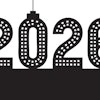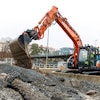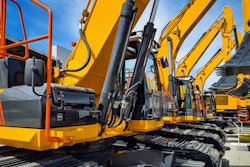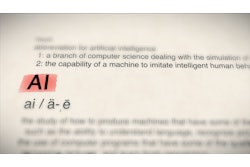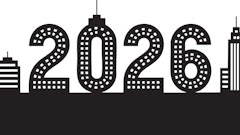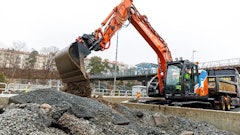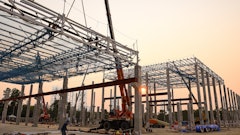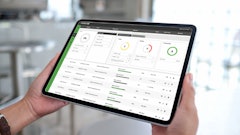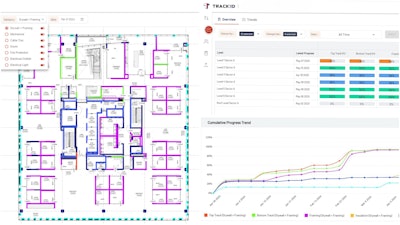
Delays on construction projects can cost thousands of dollars per day, yet the way teams track site progress often lags the pace at which decisions need to be made. Even $100M-plus builds still rely on weekly updates, email threads and manual status reports. Even $100 million+ projects still rely on email threads, manual status reports and weekly updates.
According to McKinsey, large-scale construction projects run 20% longer than scheduled and up to 80% over budget, with poor productivity and delayed reporting highlighted as main causes. Procore’s How We Build Now report (2023) shows nearly half of all projects are behind schedule and over budget, with teams spending 28% of their time on rework and 18% searching for project data, which is frequently fragmented or outdated.
When progress tracking is delayed, disconnected, or unclear, it doesn’t just slow teams down; it introduces uncertainty across the board. Delays that could have been identified and addressed early turn into critical path issues. Confidence erodes, productivity slips and risk accumulates silently in the background.
Why the Progress Tracking Status Quo Isn’t Working
Traditional progress tracking has become routine, but that routine can hide problems in plain sight. Delayed documentation, manual site updates, end-of-week summaries or delayed documentation may feel sufficient until they’re not.
Based on our experience of working on multiple construction projects, we observed just how much effort went into manual progress tracking. Superintendents and trade partners spend 30 to 60 minutes per floor walk simply recording updates. With 10+ levels, 20+ trades, and dozens of walks per week, it took over 40 hours of work just to keep progress updated, yet visibility remained fractured and slow to emerge.
Even after investing significant time, teams continue to receive subjective and disjointed snapshots of progress. For decision-makers attempting to keep work on track, a gap in situational awareness might result in missed opportunities to intervene early or coordinate effectively.
Where the Shift Is Happening
While many still rely on manual methods, a shift is underway. Leading contractors and field teams are moving toward smarter, AI-powered tools that transform status updates from a backward-looking summary into a near real-time performance system.
Many AI-powered progress tracking platforms have made this shift more accessible by tying visual site documentation to schedules and scopes to automatically generate actionable progress insights and structured reports from that data. These solutions reduce dependency on manual tracking and free teams to focus on resolving issues and making decisions that move the project forward instead of compiling updates.
A Better Model for Progress Tracking
A better progress tracking system should deliver accurate and timely insights without adding extra steps to the field team’s workflow.
For field teams, ease of use is essential. With packed schedules and constant coordination, any tool that adds friction won’t last. AI-powered progress tracking tools work by analyzing photos and videos captured during routine site walks. This visual data is connected to specific activities in the schedule and tagged by location. By comparing what’s happening on-site with what was planned, the system provides clear, actionable insights, allowing field teams to immediately understand what’s stalled and what’s moving ahead.
In more advanced use cases, AI also enhances collaboration. When one trade nears completion, the system can suggest a handover to the next. If a zone shows no movement for several days, it can highlight the area for review. These context-aware insights help teams respond faster, sequence better and reduce the risk of delays escalating unnoticed.
The Value of Smart Progress Tracking
One of the most ignored causes of delay is the time it takes to detect, identify and respond to an issue. That’s where continuous tracking makes a measurable difference.
In projects using automated progress tracking, we’ve seen systems support several critical use cases:
1. Delivering Accurate Progress Insights: Rather than depending on manual notes or subjective observations, AI-powered Progress tracking tools provide teams with objective, time-stamped insights that reflect exactly what is happening on the ground throughout the project lifecycle.
2. Detecting Scope Discrepancies Early: Automated progress tracking tools analyze site data to determine whether on-site work matches the planned scope. When a task is listed as complete, but the reality data indicates it's still pending, the system flags it early, allowing teams to catch potential delays before they escalate.
3. Significant Time Savings: Manual progress updates can quietly drain productivity. Across large sites with multiple floors and trades, Field Engineers often spend hours each week visiting and walking around the site just to log status updates. AI-powered tracking tools reduce this burden by enabling virtual walkthroughs and automated updates, saving over 40 hours per week.
4. Avoiding Redundant Site Walks: AI-powered tracking solutions eliminate the need for repetitive walkthroughs of the site. Superintendents can use visual heatmaps and area-wise progress views to pinpoint zones where work is halted or lagging, allowing them to focus their attention on where it is most needed rather than covering the entire site.
5. Enhanced Trade Management: Trade-specific dashboards and handover alerts enable teams to monitor how each trade is performing, detect bottlenecks early and ensure smoother sequencing between scopes of work.
It’s About More Than Speed; It’s About Trust
At the heart of better progress tracking is something harder to measure but impossible to ignore – trust. Field and office teams can spend less time reconciling what happened and more time solving what’s next when they share a common view of the project.
Leadership in particular needs shared visibility, as they would like to understand project health briefly. They rely on structured insights such as on-schedule percentages, trade completion rates and automated delay notifications that show how a project is progressing, where support is needed and which risks are emerging.
The adoption of AI-powered progress monitoring tools is driven by this combination of trust and clarity. Not because they replace fieldwork, but because they surface field reality in a way that supports decision-making. In environments where timing and coordination are everything, Automated progress tracking helps teams move faster and with greater confidence
What This Means for the Industry
Progress tracking is no longer a nice-to-have; it’s a must-have. What was once considered a compliance requirement or client-facing deliverable has evolved into a frontline performance enhancement tool. Traditional construction methods cannot keep up with today's fast-paced, high-stakes industry.
With the accessibility of AI-powered tracking solutions, the industry is at a turning point. Forward-thinking owners, general contractors, and trade partners are embracing the new era of construction monitoring, which reduces delays, improves coordination and fosters trust without disturbing daily workflows or adding additional workloads.
The goal isn’t just to gather data. It’s to generate better insight, built into the natural rhythm of the jobsite.

